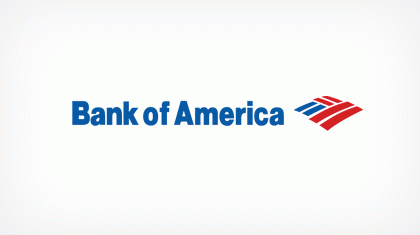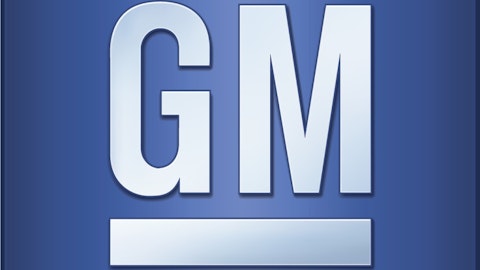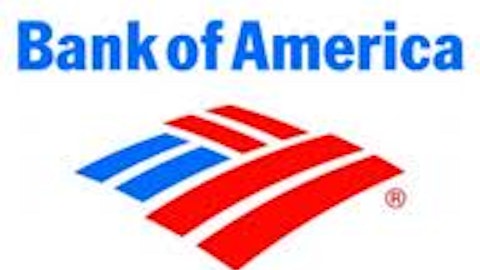Investors need to be careful about assumptions. One popular assumption that I’ve heard in the news is that big banks will have to deal with years of problems before they can return to their glory days. I’ve written about Bank of America Corp (NYSE:BAC) before, and to be blunt, the company has surprised me with the speed of their recovery. Less than a year ago, Bank of America was struggling in multiple areas like consumer real estate, mortgage, and home equity loans, just to name a few. Today the story is very different. Bank of America is working through its problems, and even after a decent run in the stock, the shares appear to offer significant value.

Admittedly I’m not suggesting that Bank of America is the best bank in the country. In my opinion, that title is a tie between BB&T Corporation (NYSE:BBT) and U.S. Bancorp (NYSE:USB). These two banks have consistently turned in superior organic growth relative to their peers. In the “big bank” comparison, most investors would point to Wells Fargo & Company (NYSE:WFC) as a better option than Bank of America. Others might suggest that Citigroup Inc. (NYSE:C) could be a good turnaround candidate. However, there are three different reasons that Bank of America appears to be a good opportunity at this time, and two of the three are major changes over the last year.
Can You Believe This?
If I told you that four companies reported EPS growth of 29%, 22.58%, 15.4%, and 25%, would you be interested? How about if I told you those were the numbers reported by BB&T, Citigroup, U.S. Bancorp, and Wells Fargo respectively? Analysts are also suggesting this is just the start of positive earnings from these companies. In the next few years, analysts expect BB&T and Citigroup to grow earnings by 10.87% and 11.65% respectively. By comparison, U.S. Bancorp and Wells Fargo are expected to grow EPS by 9.1% and 9.33%.
If you can believe it, Bank of America is expected to outperform all of the above. Analysts are calling for 18.76% EPS growth from the company over the next few years. What is even more impressive is, Bank of America sells for a forward P/E ratio of 11.8, which makes its PEG ratio just 0.63. By comparison, BB&T sells for a PEG of 0.95, Citigroup is at 0.78, U.S. Bancorp sells for 1.18, and Wells Fargo’s PEG is 1.03. The bottom line is, if Bank of America can meet projections, this is one of the cheapest bank stocks available relative to its potential earnings growth.
Tangibly Cheap As Well
One way that investors can clearly see the potential value in Bank of America is their tangible book value relative to the current stock price. While book value can be suspect at many companies, banks have been raked over the coals in the last few years to make sure their assets and liabilities are reported accurately. U.S. Bancorp (NYSE:USB)ing tangible book value takes this a step further by eliminating items like goodwill. With a tangible book value of $13.36, Bank of America is one of the cheapest by this measure as well. In fact, look at a comparison of Bank of America versus its peers as of this writing:
| Name | Tangible Book Value | Current Price (as of 2/1/13) | Discount Or Premium To Tangible Book |
| Bank of America | $13.36 | $11.70 | -14.19% |
| BB&T | $17.52 | $31.25 | 78.37% |
| Citigroup | $51.19 | $43.17 | -15.67% |
| U.S. Bancorp | $18.31* | $33.38 | 82.30% |
| Wells Fargo | $27.64* | $35.19 | 27.32% |
(*tangible book from current earnings reports except USB and WFC which provided only traditional book value)
As you can see, the two more troubled lenders of Bank of America and Citigroup sell for a discount to their book value compared to their peers. In the traditional sense, if Bank of America’s asset quality improves, the stock should trade for closer to book value.
An Unexpected Improvement And The Next Step
One of the more surprising developments over the last few quarters, has been the improvement in Bank of America’s credit quality. Last year, the company’s legacy assets that were 60+ days delinquent totaled 1.6 million accounts. Last quarter, this number had dropped to 936,000, and in the current quarter, the number improved again to 773,000 accounts. While Bank of America’s non-performing assets ratio is still 2.62%, the company includes foreclosed properties in this calculation. When you consider that Wells Fargo’s non-performing loans excluding foreclosed properties is 2.56%, and Citigroup’s non-performing loan percentage stands at 1.93%, this figure from Bank of America looks encouraging. The company has a long way to go to match BB&T’s or U.S. Bancorp at 1.2% and 1.11%, but Bank of America seems to be in line with several of its large bank peers.
As you can see, Bank of America has come a long way over just the last year. While the bank can’t be considered one of the best performers yet, the shares sell at a discount to their projected growth rate and tangible book value. The fact that they have cut their problem legacy assets by more than 50% in the last year is a huge accomplishment. The bottom line is, the risks seem to be more than accounted for. While it’s true that BB&T, U.S. Bancorp, and Wells Fargo all pay yields that far outstrip both Bank of America and Citigroup, they don’t offer the same earnings growth potential. For investors willing to take on the risk, Bank of America looks like a value that is too good to be ignored.
The article 3 Metrics That Make This Stock A Buy originally appeared on Fool.com and is written by Chad Henage.
Copyright © 1995 – 2013 The Motley Fool, LLC. All rights reserved. The Motley Fool has a disclosure policy.





